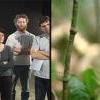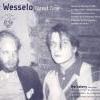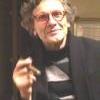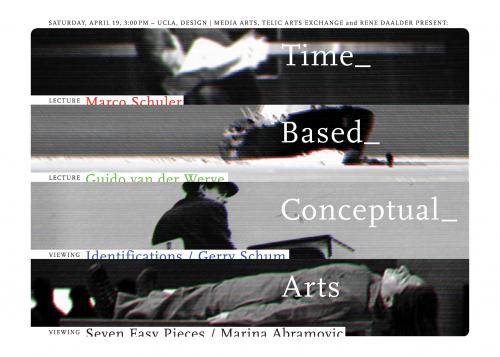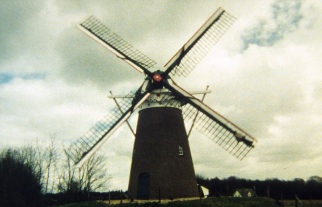DORKBOTSOCAL 5
November 20, 2004 at 6:00 pm
You need to upgrade or install Adobe Flash Player

[ O R G A N I Z E D B Y ]
Casey Reas
http://www.groupc.net/
// —————————————————————————–
[ P R E S E N T E R S ]
Annina Ruest
http://www.t-t-trackers.net/
TRACK-THE-TRACKERS is a network installation consisting with mobile components. The project makes use of existing personal technologies in conjunction with GPS infrastructure to provide participants with an audible (not a visual) experience of the proliferation of video surveillance in the urban public sphere. The mobile unit, a bag containing a laptop, GPS-receiver, earphones, and a generic mouse is taken on a walk through the city. The sound in the headphones changes whenever the participant enters the vicinity of a surveillance camera. This effect is not automatic but created by other participants who are adding new locations to the existing database. The technology is documented with the intention of inspiring others to build similar psychogeographic systems.
Annina Ruest is a Swiss media artist currently based in San Diego. Most of her artistic activity so far has taken place within the field of software art. As part of the group LAN she co-authored the project tracenoizer.org - Disinformation on Demand. She is also the author of SuperVillainizer - Conspiracy Client (supervillainizer.ch), TRACK-THE-TRACKERS— (t-t-trackers.net) and most recently BUSH BOT 0.4 (bushbot.ath.cx). She graduated in 2003 from the Department of New Media, Zürich School of Art and Design (www.snm-hgkz.ch) and is now a graduate student at the Department of Visual Arts at UC San Diego (visarts.ucsd.edu).
// —————————————————————————–
Schoenerwissen/OfCD
http://www.sw.ofcd.com
Schoenerwissen/OfCD presents their approach by outlining principles and methods they used for recent projects - situating the work with respect to other related design strategies. They will focus on their last project txtkit - A Visual Text Mining Tool.
Schoenerwissen/OfCD continues its design research on information architectures, interfaces and visual languages currently at UC Santa Barbara. In developing new digital tools SW/OfCD provides spatial and temporal contexts serving as frameworks for exploration and dynamic decision making. Their project Minitasking - a visual gnutella client has been recognized by an Award of Distinction of the Prix Ars Electronica in 2002 and received the transmediale Software Award in 2003. Their latest project txtkit - visual text mining tool was supported by the Federal Ministry for Education and Research (BMB+F) and Länder Ministries for Education or Science and Culture. In 2004 txtkit has been awarded an Honorary Mention at Net Vision category of Prix Ars Electronica.
// —————————————————————————–
Andreas Schlegel
http://www.sojamo.de/
TEMP is a software based network environment for any software capable of tcp or udp socket communication. TEMP is made for people utilizing computers and similar devices as a tool for their expression. Where most software is developed for specific processes, TEMP interconnects these environments, and enables collaborations between artists, scientists, or researchers from different disciplines without insisting on one particular software environment. Time shouldn’t be spent on solving technical issues but rather on finding communication models to explore the possibilities of interactions and interconnections amongst nature, people, and devices.
Andreas Schlegel is a computational designer interested in collecting data, sensing spaces, exploring communication processes in the fields of networks. He received a diploma in communications design from Merz Akademie Stuttgart, Germany, and an MS in Media Arts and technology from the University of California, Santa Barabra. He currently lives and works in Berlin, Germany.
// —————————————————————————–
Daniel Sauter
http://daniel-sauter.com/
LIGHT ATTACK is a media artwork, as well as a social experiment, which takes place the urban sphere of Los Angeles. While driving through the city, an animated virtual character is projected onto the cityscape of L.A. exploring three places “to go” and three places “not to go”, according to the popular Lonely Planet travel guide. Light Attack elaborates the concept of the “moving moving” image in the stereotyped neighborhoods of Hollywood, Beverly Hills, Santa Monica, Downtown, Watts, and Compton. The virtual character, projected from a moving vehicle onto the city facades, reacts to the architectural context, and interacts with passers-by while “walking” through the city. The character’s actions are condensed in a gallery installation, reflecting projection as an emergent ubiquitous medium. The piece raises questions about property and privacy. How public is public space? How projection, as a medium, changing the environment in which we live?
Daniel Sauter is a media artist exploring interactive installations dealing with time and space relations, cultural implication of technologies and site-specific interventions. Currently Sauter is a lecturer at the Design | Media Arts department at UCLA. His works have been shown internationally including the Ars Electronica Festival 2004, O.K Center for Contemporary Art, Linz, Austria; Milia 02 in Cannes, France; International Video Festival in Bochum, Germany; 6. International Videofestival in Novi Sad, Serbia and Montenegro, FILE2002 in Sao Paulo, Brazil; telic gallery, Los Angeles; LACMALab, Los Angeles; westweek, Pacific Design Center in Los Angeles; Europrix Festival in Vienna, Austria; Leipzig Book Fair in Leipzig, Germany; werk, bauen + wohnen in Zagreb, Croatia, Europrix Award, Lisbon, Portugal. Diploma HfG/ZKM Karlsruhe, Germany; MFA Design | Media Arts, UCLA. Honorary Mention Prix Ars Electronica, Interactive Art, 2004; Winner Europrix Students’ Award, 2001.
events, lecture | Comments Off


